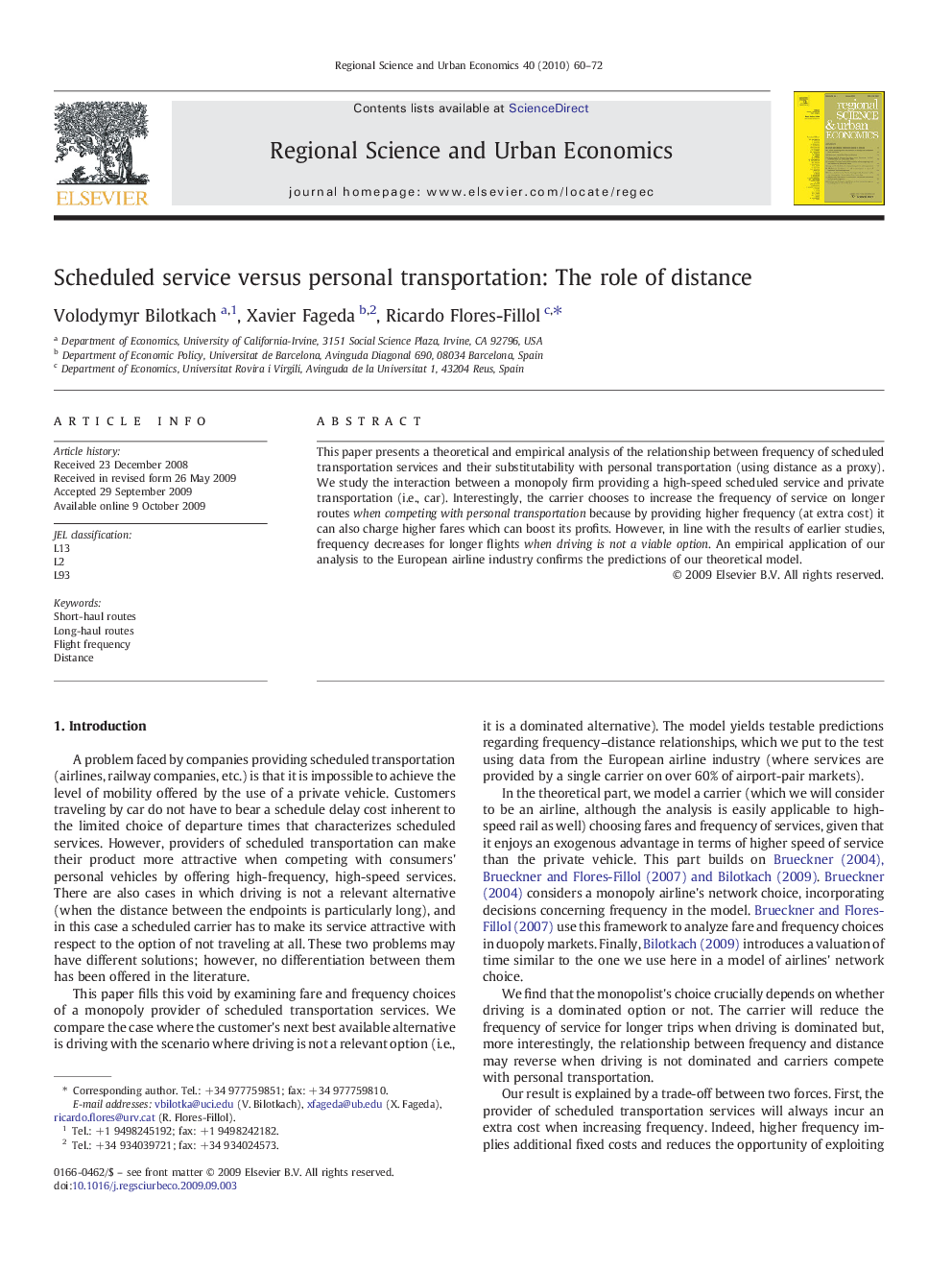| Article ID | Journal | Published Year | Pages | File Type |
|---|---|---|---|---|
| 983837 | Regional Science and Urban Economics | 2010 | 13 Pages |
This paper presents a theoretical and empirical analysis of the relationship between frequency of scheduled transportation services and their substitutability with personal transportation (using distance as a proxy). We study the interaction between a monopoly firm providing a high-speed scheduled service and private transportation (i.e., car). Interestingly, the carrier chooses to increase the frequency of service on longer routes when competing with personal transportation because by providing higher frequency (at extra cost) it can also charge higher fares which can boost its profits. However, in line with the results of earlier studies, frequency decreases for longer flights when driving is not a viable option. An empirical application of our analysis to the European airline industry confirms the predictions of our theoretical model.
